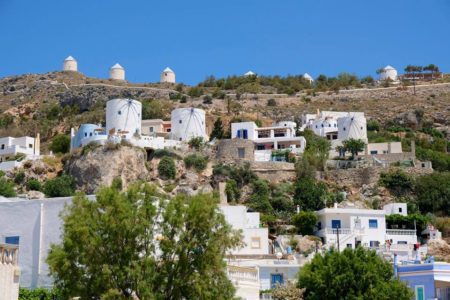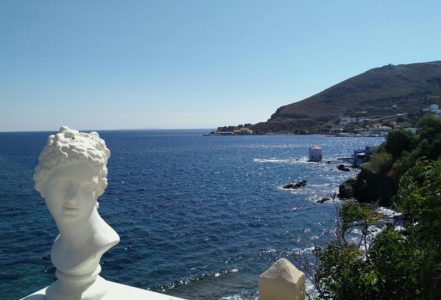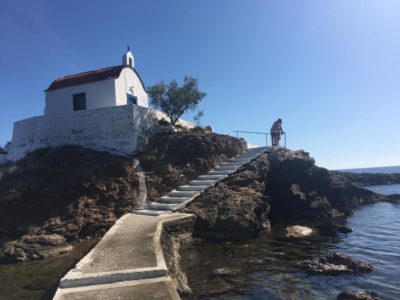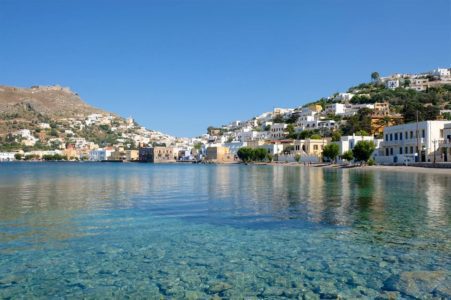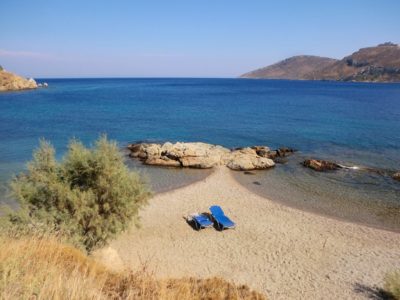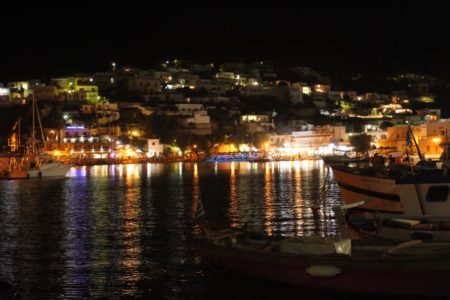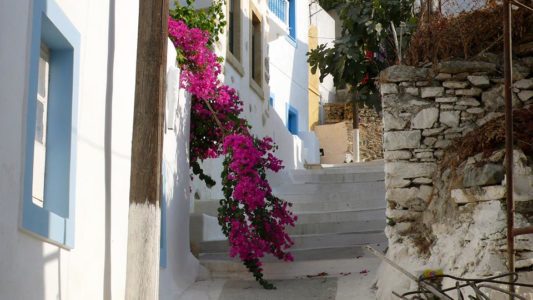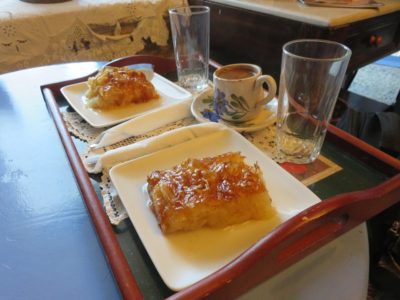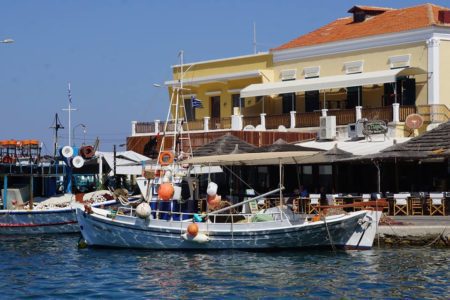Leros Island – Holiday on Leros
Leros, the island of Artemis, is a Greek island still little known as an international tourist destination. Precisely for this reason, it is much loved by those looking for authenticity and tranquility in the Greek islands far from mass tourism. Located between the Greek islands Kalymnos, Patmos and Lipsi, Leros is a medium-sized island, about 14 km long, not very mountainous and very green. It is crossed by gentle and low hills, covered with eucalyptus and pine trees, fertile valleys and fields of olive trees.
All villages of the island of Leros are located along the high cliffs and small bays. Here you experience a genuine atmosphere with a traditional character, thanks to a right combination of modernity, nature, history and local culture. Leros is an island still little known by tourism, but those who come to spend their holidays, or even just a few days in transit, are enchanted by it.
Book your ferry ticket to Leros here
Leros villages and town
Agia Marina is the second port of the island and today appears practically as an extension of the old city of Platanos, the capital of Leros. Originally Aghia Marina was a small Greek fishing village and only in “recent” times has it become an important berth for ferries, hydrofoils, private yachts and of course for fishing boats. Platanos, with its many colorful shops, is the center of the social and commercial life of the island of Leros. The atmosphere to the visitors may seem a bit nostalgic, as the city has not yet adapted to tourism or developed to meet all its needs. But it is still keeping its original structure and conformation almost unchanged.
Pandeli village is a simple Greek fishing village with excellent tavernas and some simple guest houses overlooking the waterfront. Shaded beach is a strip of yellow sand and small pebbles. From Pandeli the road continues uphill towards the Castle passing close to famous and beautiful windmills of Leros. Heading south, however, is Vromolitos, the largest town of Leros after Pandeli, with a beautiful sandy beach and some Apartments and Hotels.
Lakki instead is the city of the island that bears the most signs of recent history. Built by the Italians during the occupation period, it follows the town of Sabaudia. When you arrive in Leros, you find it hard to believe you are on a Greek island and the impression is that of being on the abandoned set of a Fellini movie. Lakki, originally called Portolago, in honor of the governor Mario Lago. Today it is the main port of the island, where ships arrive from Athens.
The climate
“Sun”, this is one of the main and most appreciated features of the island. From April to November the island of Leros offers a Mediterranean climate of excellence that gives the possibility to fully enjoy the sea and the sun. Throughout this period, during which the rains are very rare, the days are always sunny and caressed by the Meltemi.
You can run into some rain at the end of September and October, even if the rainy season does not start before November. From this month it begins in winter, which in any case in the Dodecanese islands, has a mild climate and lasts until March.
How to get to Leros
Leros, can be easily reached from the island of Kos, Rhodes or Samos. The sea connections are daily, but we must always take into account possible flight / ferry delays or wind / sea conditions to have enough time to arrive or depart from the island. Leros is also equipped with an airport, but is operating only for domestic flights.
Where to stay in Leros
Most of islands’ housing is concentrated in the areas of Aghia Marina, Alinda and the village of Pandeli. The structures are mostly simple, family run, and often have few rooms or apartments available so it is advisable to book well in advance if you want to stay in Leros in high season.
Most beautiful beaches
Pandeli in Leros is a simple Greek fishing village with excellent tavernas and some simple guest houses overlooking the waterfront. Bay of Alinda, the most popular and popular tourist resort of Leros. In Alinda we find a promenade characterized by numerous cafés and bars, while the long and narrow beach, mainly of sand and pebbles, is equipped with sunbeds and umbrellas and offers a good water sports service, as well as the pleasant shade of the characteristic tamarisk trees. On the other side of the island of Leros, 3 km west of the capital, lies the Bay of Gourna, always fairly windy and uncrowded, which is divided into two beaches: Gourna, broad and of yellow sand, and Drimonas, small and narrow.
Where to eat in Leros
With about 9 thousand inhabitants, Leros is a quiet and relaxing Greek island that has paid much for the faults of the past. Especially those related to the bad reputation of the psychiatric hospital during the 1950s. This has inevitably, and unfairly, also affected tourism which, compared to the other Greek islands, began to develop much later.
The spirit with which the local inhabitants, still deeply linked to their land and the sea, approach tourism is therefore much more aware and conscientious having learned from the mistakes of others. In the last 20 years most of the tourists who come to spend their holidays in Leros are Italian. Leros was in fact one of the most Italianized islands at the time of the fascist colonization, and there are many Italians of the past and their families who return there, feeling almost like home.


